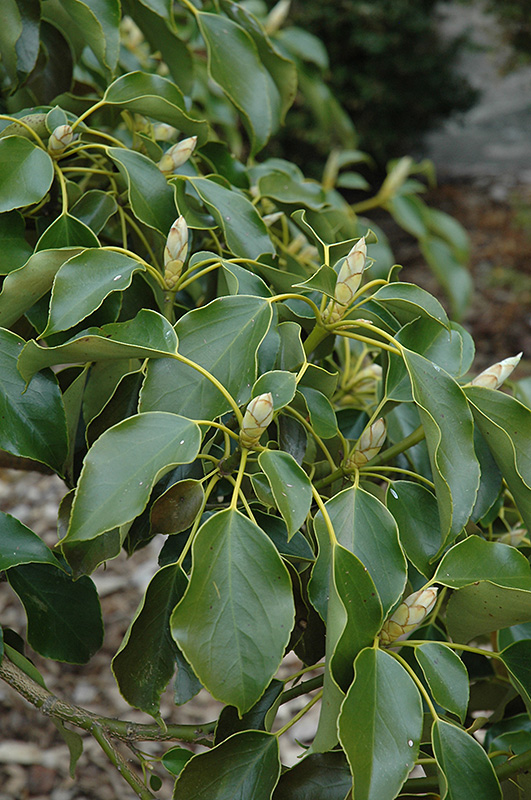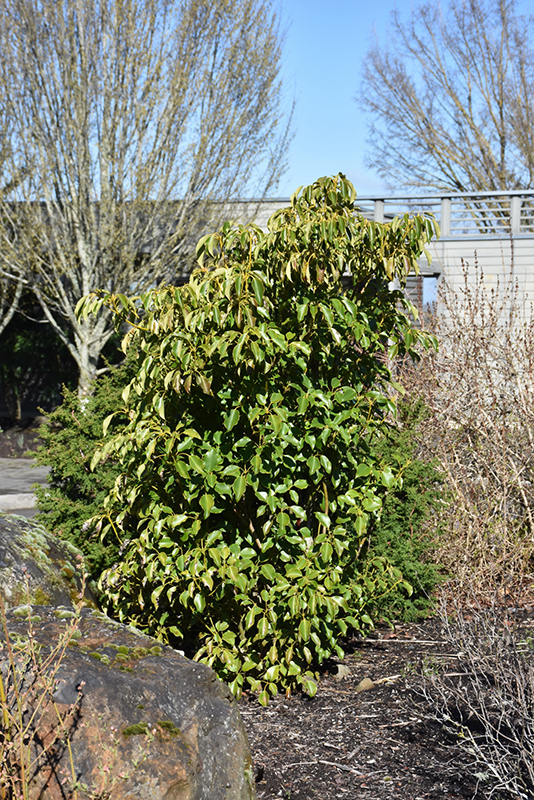Height: 20 feet
Spread: 15 feet
Sunlight:
![]()
![]()
Hardiness Zone: 5b
Description:
A slow growing small tree or large shrub with attractive, evergreen foliage that is shiny dark green; yellow-green flowers in spring resemble small wheels with stamens that radiate outward like spokes; a stunning accent tree that is great for small spaces
Ornamental Features
Wheel Tree features unusual racemes of chartreuse round flowers at the ends of the branches from mid to late spring. It has attractive dark green foliage with grayish green undersides. The glossy oval leaves are highly ornamental and remain dark green throughout the winter.
Landscape Attributes
Wheel Tree is a multi-stemmed evergreen tree with an upright spreading habit of growth. Its relatively coarse texture can be used to stand it apart from other landscape plants with finer foliage.
This is a relatively low maintenance tree, and should only be pruned after flowering to avoid removing any of the current season's flowers. It has no significant negative characteristics.
Wheel Tree is recommended for the following landscape applications;
- Accent
- General Garden Use
- Container Planting
Planting & Growing
Wheel Tree will grow to be about 20 feet tall at maturity, with a spread of 15 feet. It has a low canopy with a typical clearance of 1 foot from the ground, and is suitable for planting under power lines. It grows at a slow rate, and under ideal conditions can be expected to live for 40 years or more.
This tree does best in full sun to partial shade. It prefers to grow in moist to wet soil, and will even tolerate some standing water. It is not particular as to soil type or pH. It is somewhat tolerant of urban pollution. This species is not originally from North America.
Wheel Tree is a fine choice for the yard, but it is also a good selection for planting in outdoor pots and containers. Its large size and upright habit of growth lend it for use as a solitary accent, or in a composition surrounded by smaller plants around the base and those that spill over the edges. It is even sizeable enough that it can be grown alone in a suitable container. Note that when grown in a container, it may not perform exactly as indicated on the tag - this is to be expected. Also note that when growing plants in outdoor containers and baskets, they may require more frequent waterings than they would in the yard or garden.


